Trust Coastal Property Restoration For Rapid Relief And Peace Of Mind
Swift Water Damage Cleanup and Restoration
Water Damage Restoration in Meggett, SC
- Dealing with a devastating water-related event in your home or business is a truly traumatic experience. What starts as a small leak can quickly escalate into a situation where your property is flooded with water. Your most cherished belongings and important business documents are ruined. You're left with a catastrophe on your hands, and with every minute that passes, things seem to get worse. Within 24 hours, the most important people in your life are now at risk because of compromised water containing harmful bacteria and allergens.
- If you've never experienced the effects of water damage, be thankful. But those who have had to endure such an unwelcome experience know first-hand how important it is to get the water cleaned up ASAP. That's where Coastal Property Restoration swoops in to save the day. From roof leaks and busted pipes to sump pump malfunctions and natural disasters, Coastal Property Restoration provides water damage clean-up in Meggett, SC, when you need professional service and peace of mind most.
Service Areas
A Water Damage Restoration Company You Can Trust
At Coastal Property Restoration, our water damage mitigation company is always prepared to respond quickly to water damage emergencies. That's because we truly care about our customers and never subject them to half-measures or mediocre work. At the end of the day, we're passionate about restoring the lives of home and business owners who are devastated, confused, and looking for trustworthy water damage restoration.
To help achieve that goal, we use years of expertise and modern, state-of-the-art equipment to remove moisture and standing water from your property. In doing so, we can help protect your family or staff while restoring your quality of life. But you've got to act fast - damage from water in your home or business can spread quickly and just affect every aspect of your property, from its roof to its foundation.
So, if you're trying to put the pieces back together after a water loss, it's time to contact Coastal Properties LLC. With one call, our team of experts will arrive at your home or business to remediate your water damage in Meggett, SC, using advanced tools, superior drying techniques, and detailed documentation. We aim to restore your property to its pre-loss condition so you can return to living a normal life again.
The Coastal Property Restoration Process
Our team of licensed and insured water damage clean-up professionals uses a streamlined process to address your needs ASAP:
- Assess: We assess the extent of your water damage by conducting a thorough inspection.
- Mitigate: Our technicians get to work quickly to mitigate and prevent further damage to your home, business, and belongings.
- Recover: Our water damage restoration experts help you recover from your water emergency with a focus on restoring your property to its pre-loss condition.
Dealing with an emergency that needs to be addressed sooner than later? With 24-hour service, we're here for you day and night, no matter how severe your water damage issue may be.
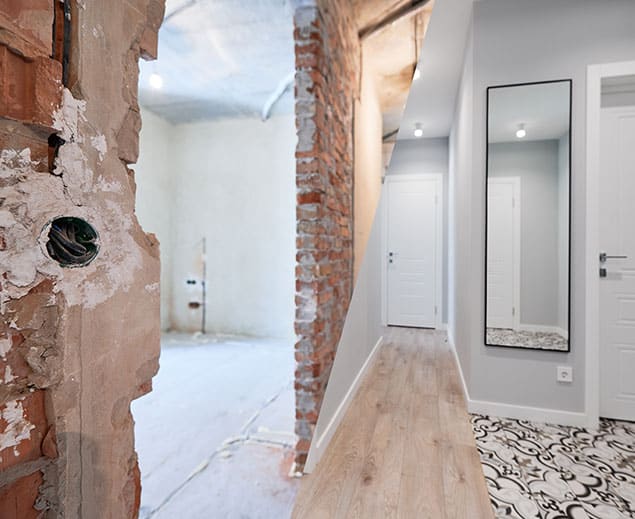
What Causes Water Damage Your Home?
Water is undoubtedly essential for our planet, but it can also be incredibly destructive. Among all the potential disasters that could harm your property, water damage ranks high. It has a tendency to sneak into small, unnoticed areas where it can cause warping and discoloration, whether it's from a severe thunderstorm or a tiny leak. Even a small amount of water can be deceptively expensive, costing thousands of dollars if not addressed immediately.
The most concerning part is that it can happen in an instant, catching you and your family off guard. However, by keeping these common causes of water damage in mind, you can take steps to prevent water from causing damage to your property.
Unsure what might be causing water to enter your home in South Carolina? Call Coastal Property Restoration as soon as you can so our team can come to your property and conduct an inspection.
Get a Quote
In the United States, South Carolina is among the top five states with the greatest number of hurricanes, with a total of 30 making landfall. This accounts for 10.10% of all the hurricanes in the country. While five of those hurricanes were classified as being major (Category 3), smaller hurricanes and even minor rain showers can result in significant water damage clean-up in Meggett, SC.
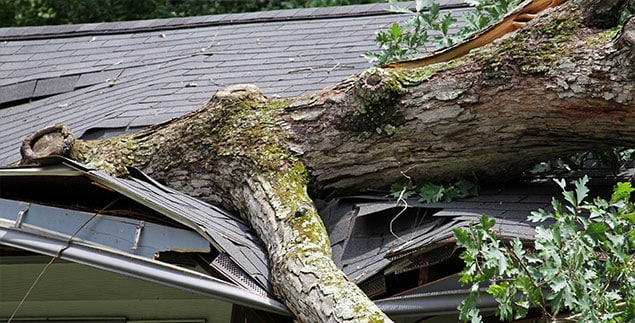
Properly functioning gutters are essential for directing water away from your home, especially during fall leaf season when clogs are common. However, when gutters do become clogged, rainwater can accumulate and flow over the edges, causing potential leaks into your attic, walls, or basement. It's important to ensure your gutters are free of debris to prevent any water damage to your home.
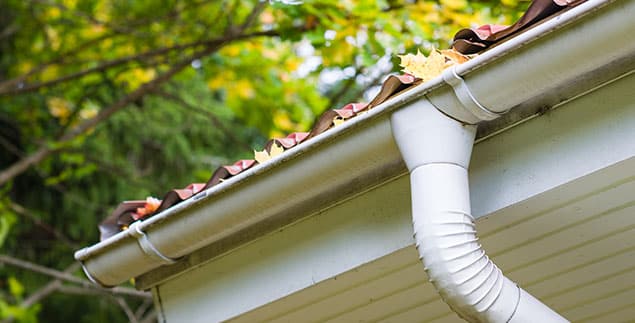
Water heaters that are old or not properly installed have a tendency to develop leaks. Sadly, these leaks can be quite severe and result in the accumulation of several inches of water in your basement or crawlspace.
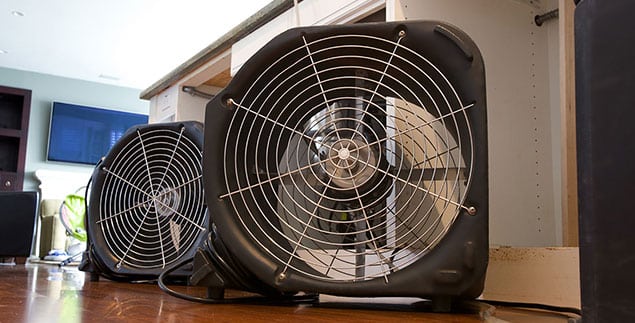
Pipe leaks may start small, but they can have devastating consequences. Whether it's loose-fitting pipes under your kitchen sink or old drainage systems under your home, water from a leak can cause serious damage to your property. Not only can it ruin prized possessions and warp wallpaper, but it can also create conditions for mold growth, even with just a small amount of moisture present. It's crucial to address any leaks as soon as possible to prevent further damage.
Some other common causes of water damage in residential homes include the following:
- Overflows (sinks, bathtubs, toilets)
- Sprinkler Systems (accidents & malfunctions)
- Clogged Drains (hair, grease, dirt, etc.)
- Washing Machines (compromised PVC supply line)
- AC Condensation (clogged condensate line, damaged drain pan)
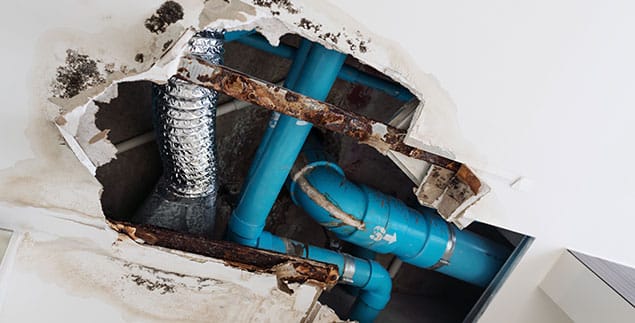
Water Damage in Meggett, SC: Restoration vs. Mitigation vs. Remediation
As a reputable water damage restoration company in South Carolina, we get questions all the time from misinformed customers asking what the differences are between restoration, mitigation, and remediation. We get it - to the untrained individual, they all sound about the same. But each serves a special purpose in the process of eliminating water from your home or office.

Water Damage Mitigation
You can think of water mitigation as an emergency response meant to stop and contain water so that it doesn't cause any more damage to your property. Often, mitigation includes an inspection of the damaged area and an advanced water extraction process to ensure a hazard-free workplace.
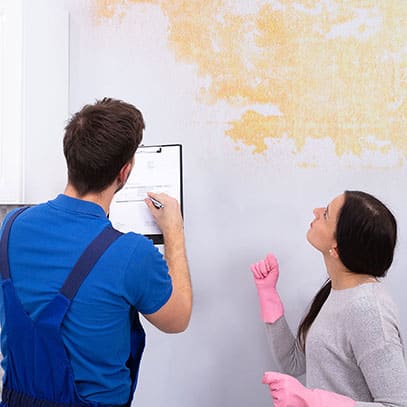

Water Damage Remediation
This stage often involves a detailed clean-up and removal of residual water from the property. Water damage techs will also remove furniture and other items affected by the water damage and dispose of any contaminated materials. During this phase, blowers and pumps may be used to dry areas of the property. Sometimes, boards or tarps are used to protect the property as needed. From there, a final cleaning usually takes place that can include deodorizing and sanitizing items that can be salvaged from water damage. It should be noted that sometimes water mitigation and remediation overlap. For instance, remediating a contaminant from an area of your home might involve mitigating damage to something like a pipe that has burst.
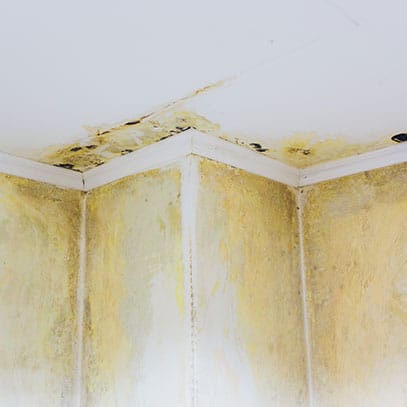

Water Damage Restoration
In this final stage, water damage restoration professionals help ensure that moisture levels in the impacted areas are back to normal. They take care of replacing the damaged drywall, repairing the floors that have buckled, and fixing the ceilings affected by water. Additionally, they clean and restore the items that are still in good condition. All of these measures are taken to bring your property back to its original state before the damage occurred. Think of it like this: Water remediation focuses on completing temporary tasks, while restoration centers around more permanent solutions.
While the water damage clean-up steps listed above might sound interchangeable, each addresses a crucial step in the remediation process. If you're working with a water damage restoration company and they tell you otherwise, know that they're perpetrating a myth. Speaking of myths, here are a few of the most common ones that we have run across in our time as water restoration experts.
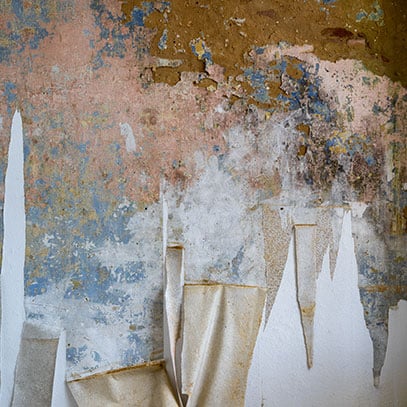
You can think of water mitigation as an emergency response meant to stop and contain water so that it doesn't cause any more damage to your property. Often, mitigation includes an inspection of the damaged area and an advanced water extraction process to ensure a hazard-free workplace.
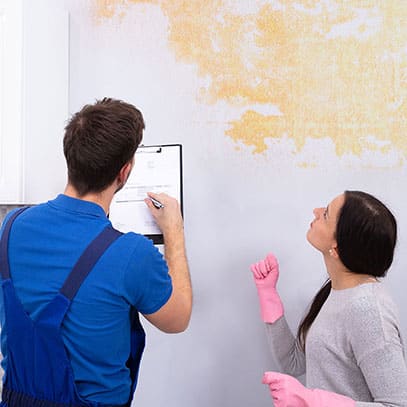
 Call Now
Call Now
This stage often involves a detailed clean-up and removal of residual water from the property. Water damage techs will also remove furniture and other items affected by the water damage and dispose of any contaminated materials. During this phase, blowers and pumps may be used to dry areas of the property. Sometimes, boards or tarps are used to protect the property as needed. From there, a final cleaning usually takes place that can include deodorizing and sanitizing items that can be salvaged from water damage. It should be noted that sometimes water mitigation and remediation overlap. For instance, remediating a contaminant from an area of your home might involve mitigating damage to something like a pipe that has burst.
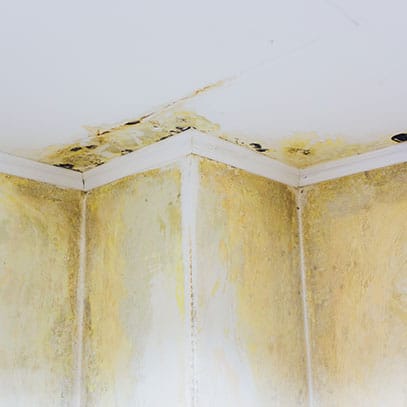
 Call Now
Call Now
In this final stage, water damage restoration professionals help ensure that moisture levels in the impacted areas are back to normal. They take care of replacing the damaged drywall, repairing the floors that have buckled, and fixing the ceilings affected by water. Additionally, they clean and restore the items that are still in good condition. All of these measures are taken to bring your property back to its original state before the damage occurred. Think of it like this: Water remediation focuses on completing temporary tasks, while restoration centers around more permanent solutions.
While the water damage clean-up steps listed above might sound interchangeable, each addresses a crucial step in the remediation process. If you're working with a water damage restoration company and they tell you otherwise, know that they're perpetrating a myth. Speaking of myths, here are a few of the most common ones that we have run across in our time as water restoration experts.
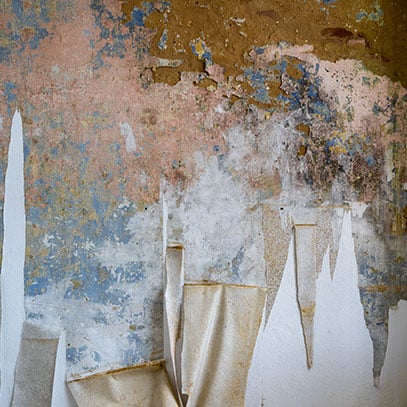
 Call Now
Call Now
Myths About Water Damage Restoration in Meggett, SC
When it comes to water damage restoration, there's a lot of information out there that can be misleading or downright incorrect. This can be especially frustrating for property owners who are caught off guard by unexpected leaks or floods. To make matters worse, there are several common myths about water damage that can actually make the problem worse if you're not aware of them. To help clear things up, we've debunked three of these myths below.
It's important to remember that water damage can often go undetected. Water has a sneaky way of hiding in all sorts of nooks and crannies throughout your home, including behind walls, in carpets, under floors, and in ceilings. The problem with these materials is that they're porous, which means they not only hide water, but they also absorb it. Even if it appears that everything has dried out, the moisture that's lurking beneath the surface can still cause serious damage over time.
That's why it's crucial to take action and not let water dry on its own. If left untreated, it won't simply evaporate; it will be absorbed. Fortunately, the expert technicians at Coastal Property Restoration are equipped with top-of-the-line equipment to help locate and eliminate any hidden moisture or trapped water. You can trust us to thoroughly dry out your home and protect it from any further damage.
Dealing with water damage restoration and preventing further damage requires swift action, as time is of the essence. The longer water remains, the more extensive the damage becomes. The response window is narrow, less than 24 hours, and within this timeframe, mold growth may occur, creating an entirely new set of issues. Plus, salvaging materials in your home after prolonged exposure to water is challenging, so the best course of action is to respond immediately to water damage.
We understand that this can be challenging, but working with a reputable water damage cleanup service like Coastal Property Restoration can make all the difference. Our team can respond promptly and efficiently, allowing you to focus on your life while we take care of your home. The bottom line? If you've got water in your home or business, don't waste any time. Call a trusted water damage restoration company ASAP to minimize losses, mitigate damage, and prevent the risk of mold.
The saying, "Everything heals with time," is not a phrase that applies to mold in your home or business. As mentioned above, it's important to act quickly when dealing with water damage, as mold can begin to grow in as little as 24 hours. The musty odor that comes with mold won't stay contained to the affected area; it will eventually spread throughout your entire home.
It's crucial to take the necessary steps to stop mold growth and spread, including proper water extraction, drying, dehumidification, and sanitization. Additionally, any saturated materials, such as couches, carpets, floors, and drywall, must be treated properly to eliminate the musty smell. To ensure your home is fully restored and smelling fresh after water damage, it's best to have a professional clean-up crew go through each step of the process to guarantee no moisture is left behind.
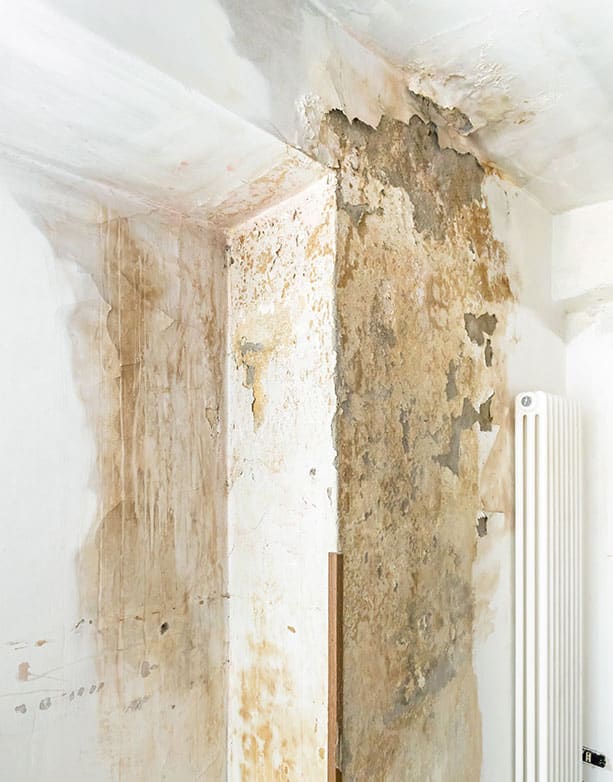
Getting Back to Business: Common Signs of Commercial Water Damage in Meggett, SC
Water damage can be a major setback for any commercial property and business, causing loss of revenue and productivity. But fear not; Coastal Property Restoration has got your back with skilled technicians and reliable water damage restoration services. As a savvy business owner, however, it's important for you to stay vigilant and look out for early signs of water damage to your property so you can take action before it becomes a major problem.
Inspect Your Piping
It's important to thoroughly inspect the piping both inside and outside the building. Pay close attention to any signs of oxidation or corrosion around pipe fixtures, and don't forget to check your water heater for rust as well. If you do notice corrosion or rust, it could be an indication of a water leak that needs to be addressed promptly.
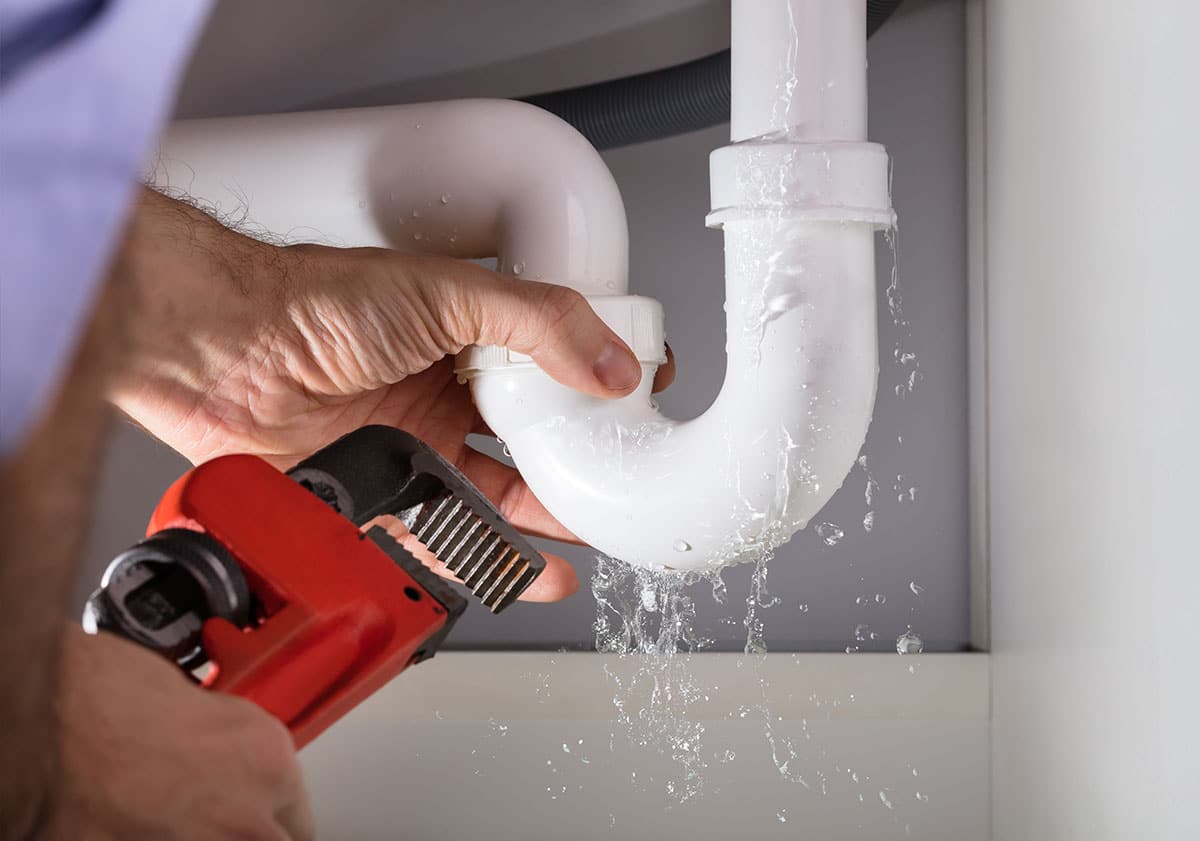
Be Wary of Mold
Mold can begin to grow less than 24 hours after water has compromised your business. If you see any signs of mold growth where there have been leaks, contact Coastal Property Restoration ASAP to diagnose the problem.
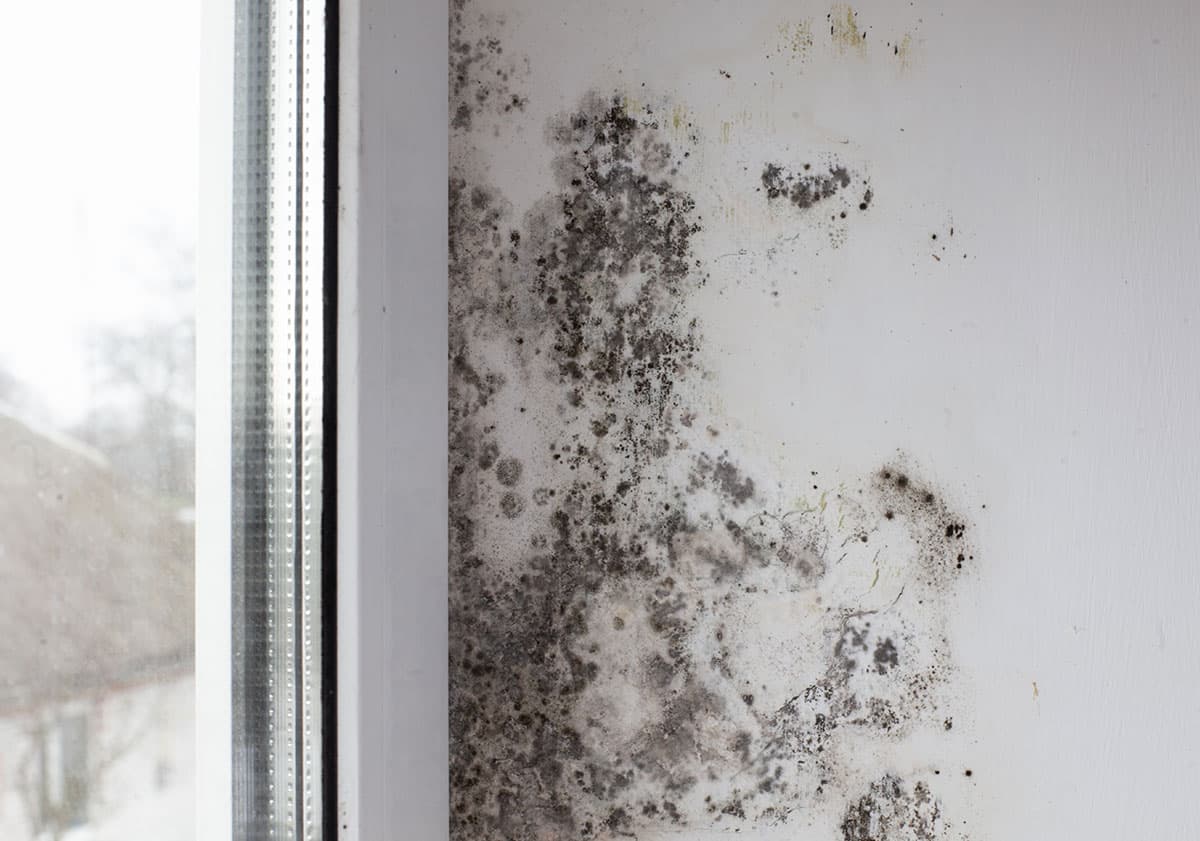
Look for Spotting
Water damage can usually be identified in businesses by dark spots on walls and ceilings, with older damage likely showing rings around the stain. Multiple rings with varying shades may indicate an intermittent problem, where the area has been repeatedly soaked and dried.
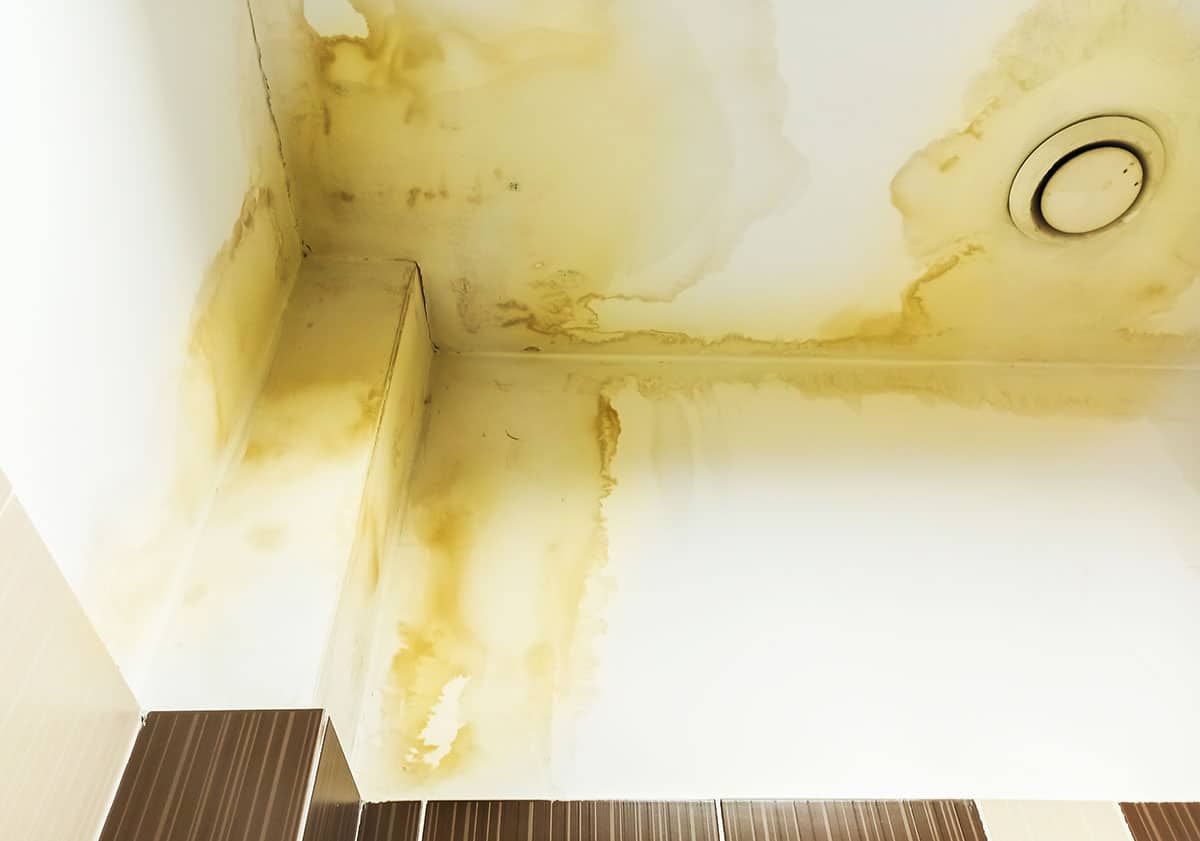
Know Your Property Like the Back of Your Hand
As the owner of commercial property, it's important to stay aware of your building's pipe system. Being knowledgeable about what's old and new, and identifying areas at risk for water damage is key. Areas with a higher potential for leaks, especially during rainstorms, should be monitored closely.
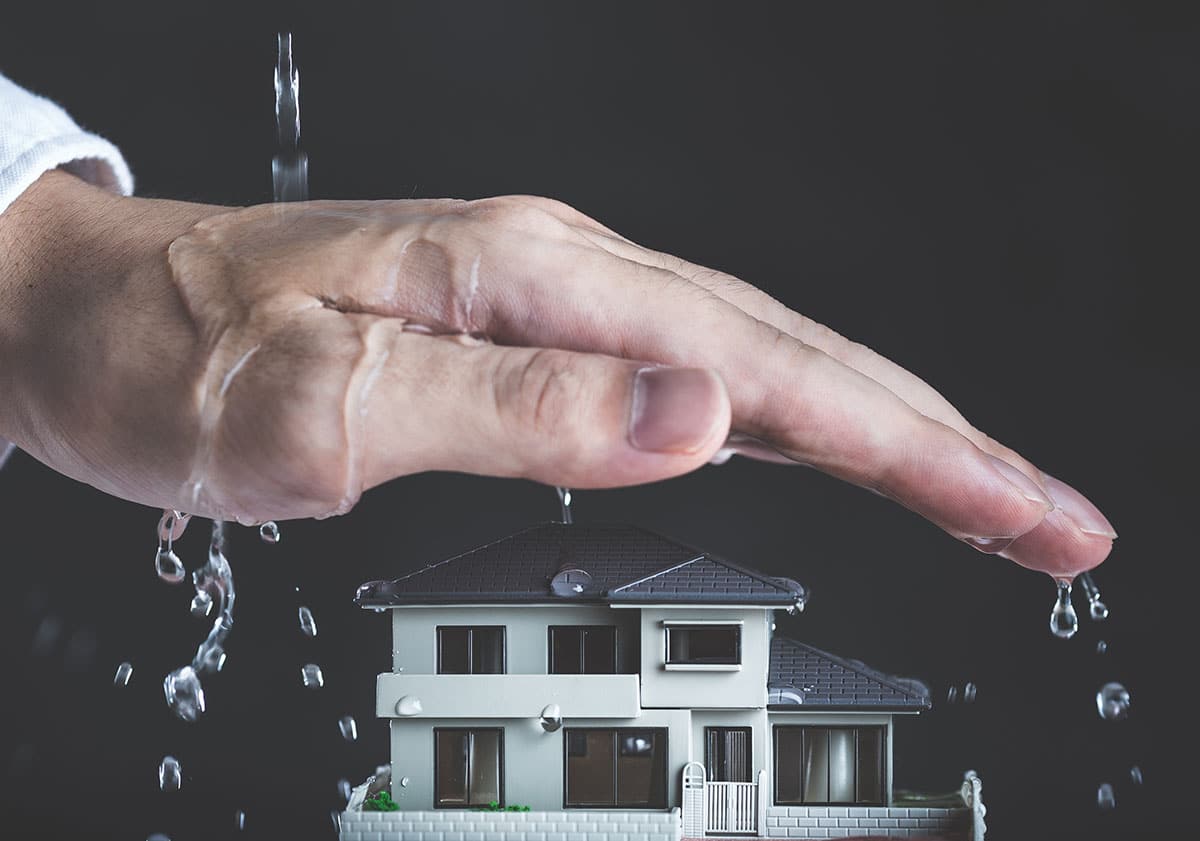
Rusty Appliances
When a commercial property owner observes rust on equipment or AC units of a building, it is highly probable that water damage is the root cause. This could be an indication of an unaddressed old leak in the vicinity. It is crucial for property owners to seek assistance from a specialist to assess the extent of the damage.
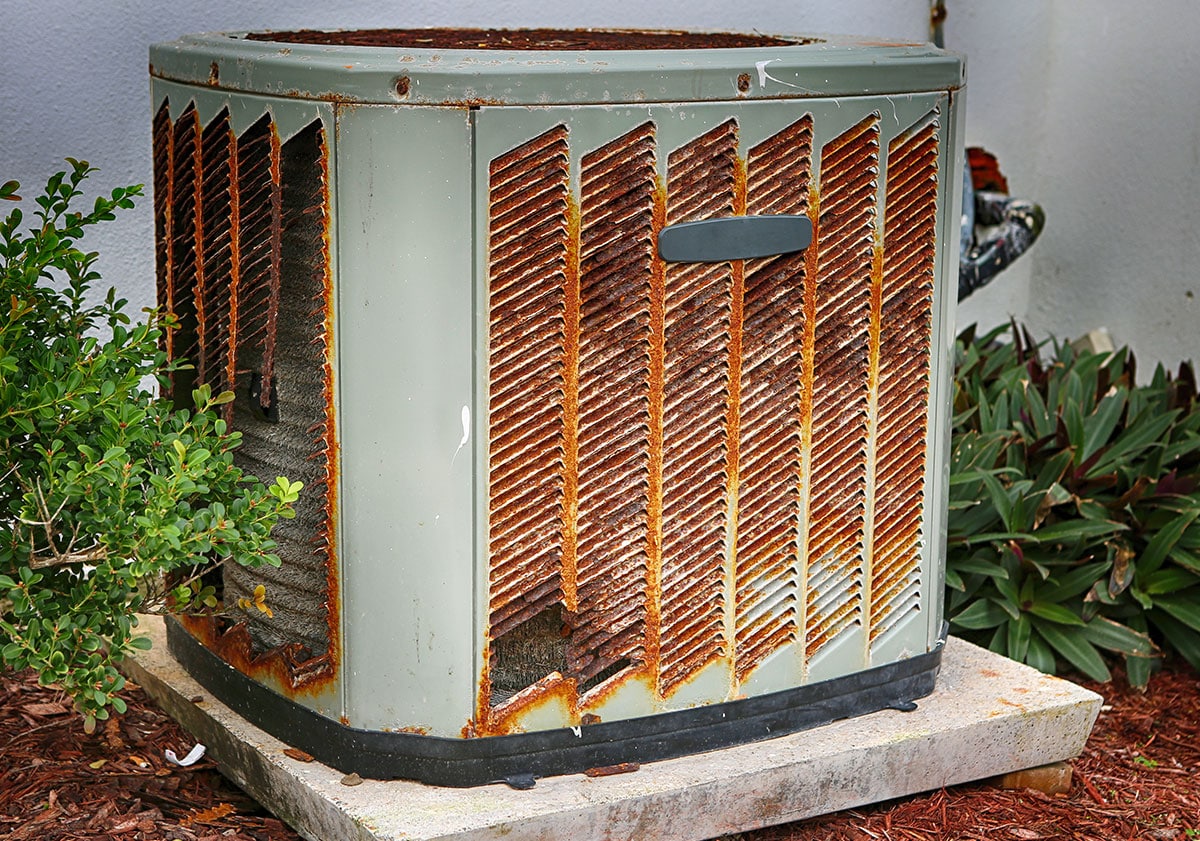
It's important to thoroughly inspect the piping both inside and outside the building. Pay close attention to any signs of oxidation or corrosion around pipe fixtures, and don't forget to check your water heater for rust as well. If you do notice corrosion or rust, it could be an indication of a water leak that needs to be addressed promptly.
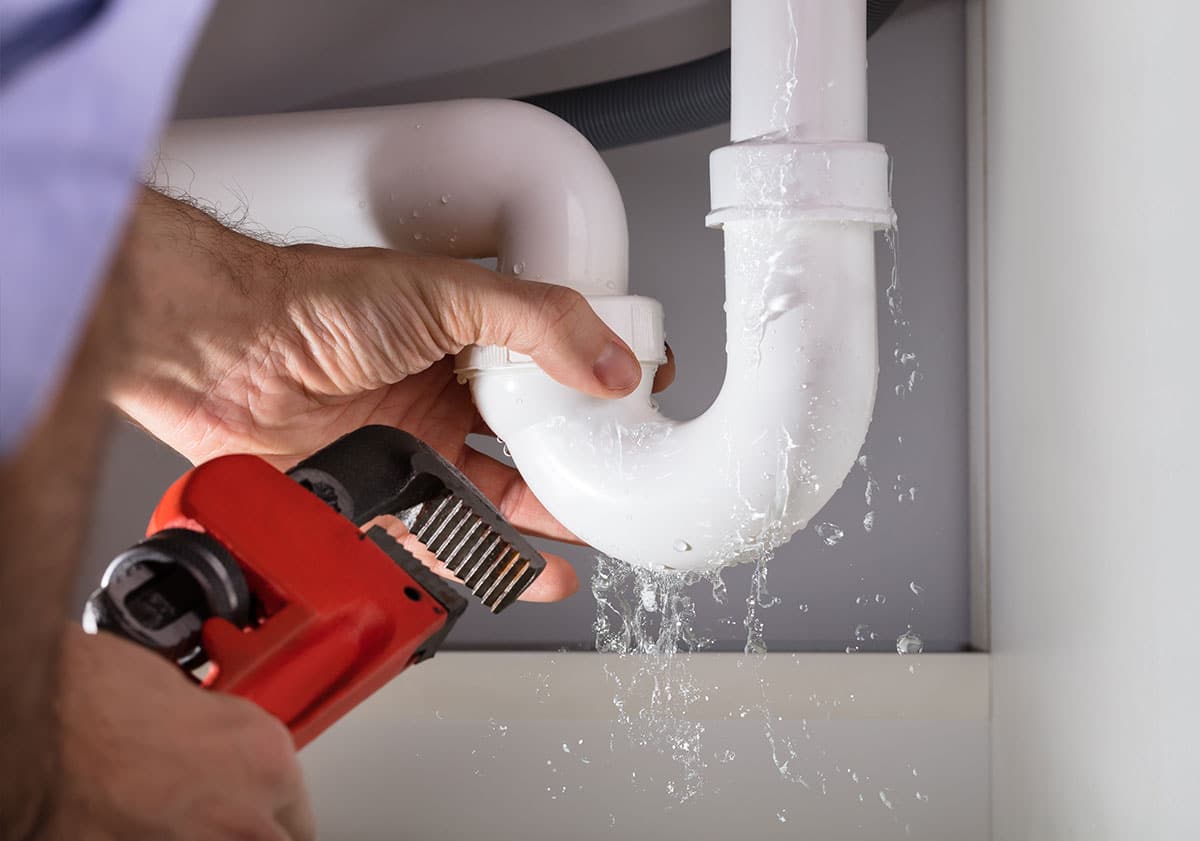
Mold can begin to grow less than 24 hours after water has compromised your business. If you see any signs of mold growth where there have been leaks, contact Coastal Property Restoration ASAP to diagnose the problem.
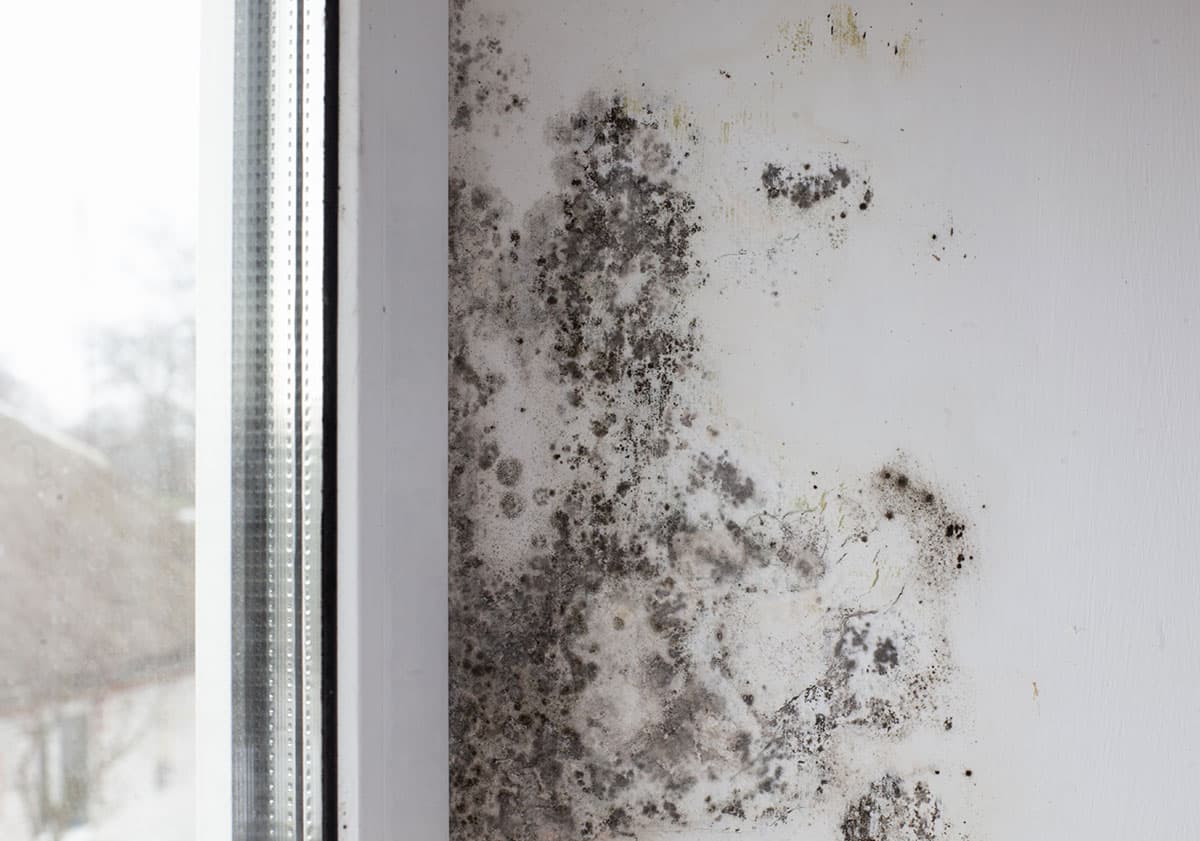
Water damage can usually be identified in businesses by dark spots on walls and ceilings, with older damage likely showing rings around the stain. Multiple rings with varying shades may indicate an intermittent problem, where the area has been repeatedly soaked and dried.
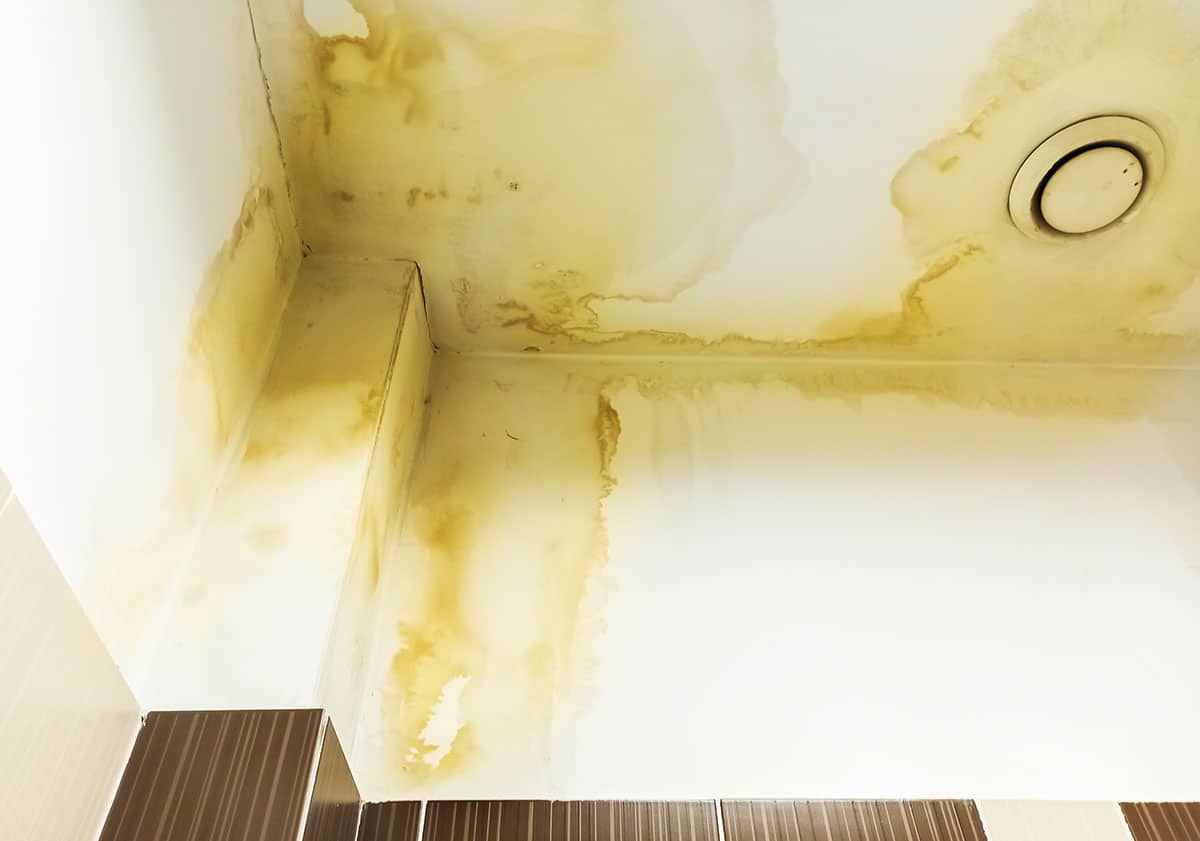
As the owner of commercial property, it's important to stay aware of your building's pipe system. Being knowledgeable about what's old and new, and identifying areas at risk for water damage is key. Areas with a higher potential for leaks, especially during rainstorms, should be monitored closely.
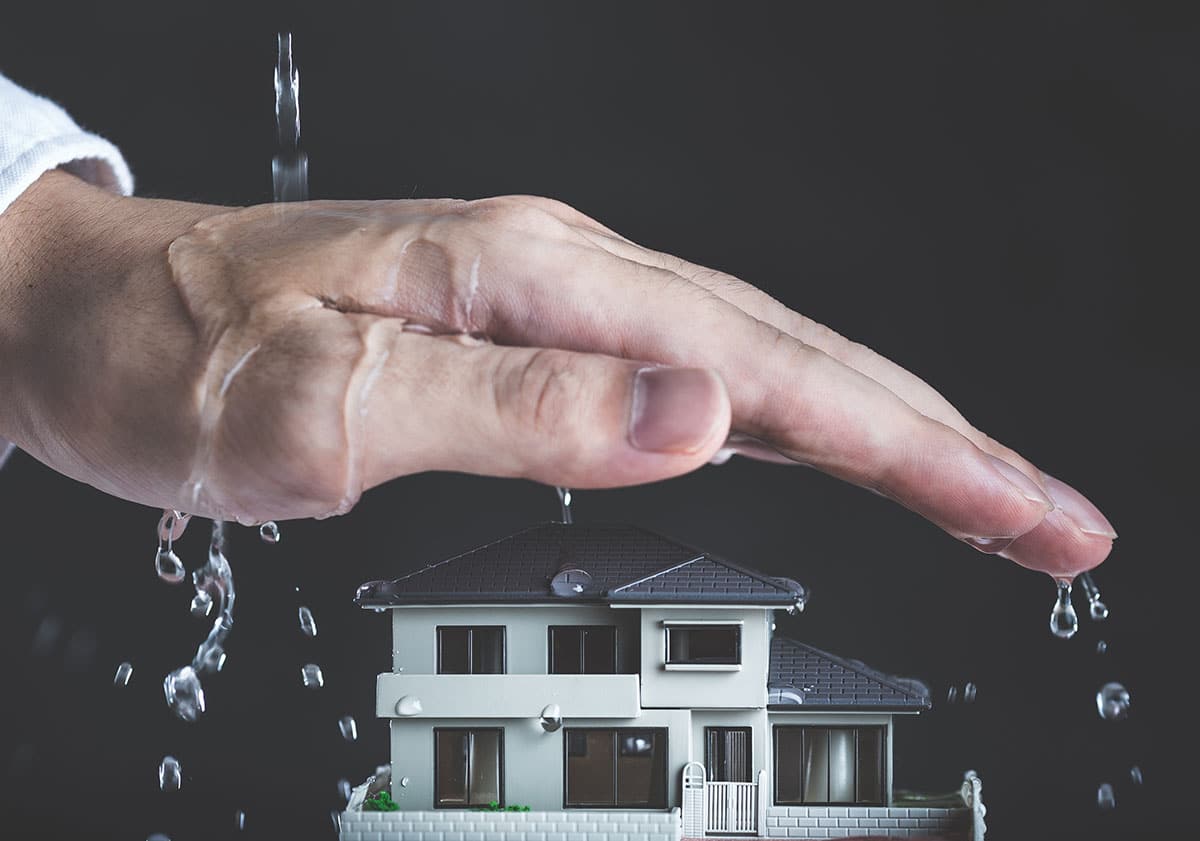
When a commercial property owner observes rust on equipment or AC units of a building, it is highly probable that water damage is the root cause. This could be an indication of an unaddressed old leak in the vicinity. It is crucial for property owners to seek assistance from a specialist to assess the extent of the damage.
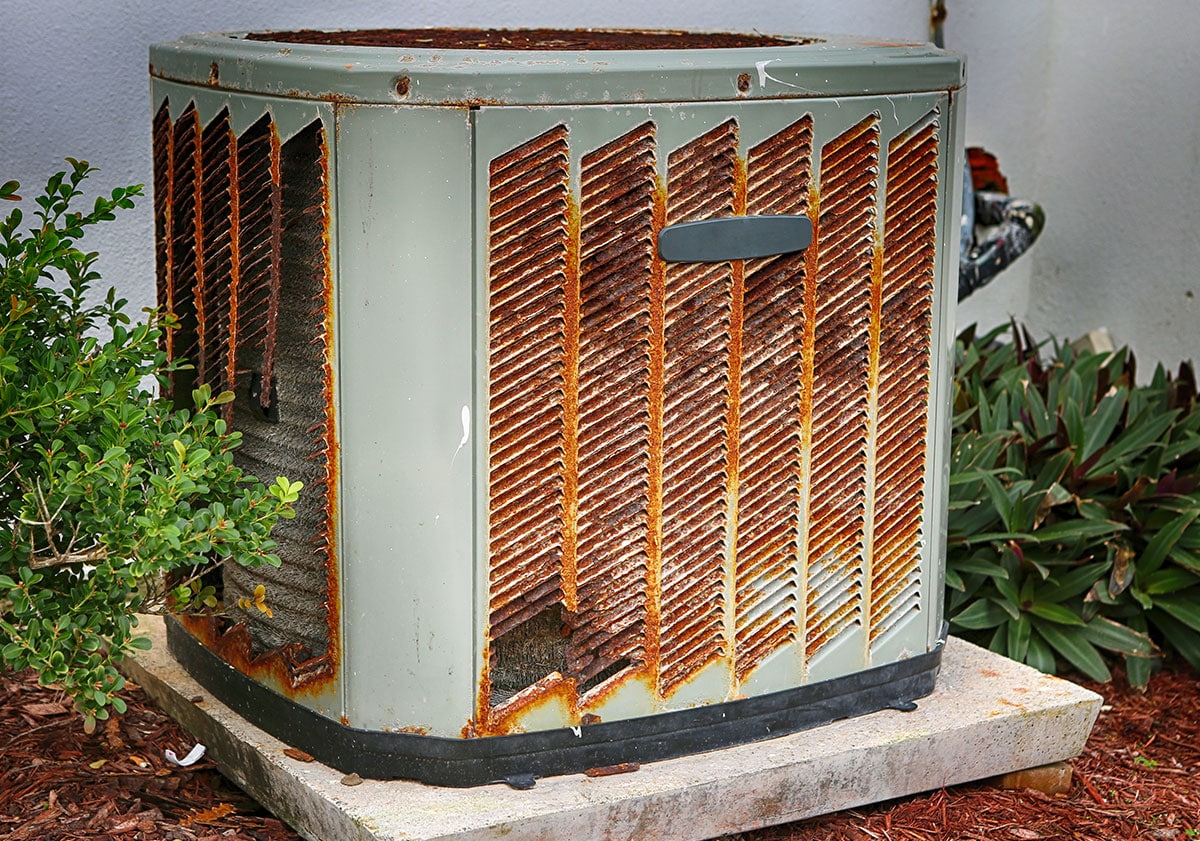
Coastal Property Restoration is Your Local Choice For Water Damage Restoration in Meggett, SC
Effective water damage clean-up is an essential process that requires a high level of expertise to ensure your property sustains minimal damage. Selecting the best water remediation company is equally important, especially when it comes to the health of your family or your customers. Whether your kitchen is full of standing water because your dishwasher overflowed or your business is at risk because of an extensive pipe leak, our team of trained and certified experts is only a phone call away, 24 hours a day.
Contact our office to discover the Coastal Property Restoration difference and what separates our water damage mitigation company from others in South Carolina.
Get A Quote
Latest News in Meggett, SC
South Carolina Evacuation Maps, Routes & Zones for Hurricane Florence
Stephanie Dube Dwilsonhttps://heavy.com/news/2018/09/south-carolina-evacuation-maps-routes-hurricane-florence/
Mandatory evacuations are already being issued in parts of South Carolina ahead of Hurricane Florence, which has strengthened to a Category 4 and may be close to that strength when it makes landfall. More evacuations may be coming. The storm is currently expected to make landfall around Thursday, but hurricane paths are always a bit unpredictable. Read on for details about evacuation zones and maps for South Carolina in 2018, as Hurricane Florence approaches, so you can be prepared. This is a developing story.Current South Carolina E...
Mandatory evacuations are already being issued in parts of South Carolina ahead of Hurricane Florence, which has strengthened to a Category 4 and may be close to that strength when it makes landfall. More evacuations may be coming. The storm is currently expected to make landfall around Thursday, but hurricane paths are always a bit unpredictable. Read on for details about evacuation zones and maps for South Carolina in 2018, as Hurricane Florence approaches, so you can be prepared. This is a developing story.
Current South Carolina Evacuations
Gov. Henry McMaster has issued a mandatory evacuation order for the entire coastline of South Carolina, and mandatory evacuation procedures will begin Tuesday at noon. These evacuations are to ensure that residents don’t stay for the hurricane’s landfall.
Breaking: SC Coastal zones now evacuating ahead of #HurricaneFlorence #ABC11 #ncwx https://t.co/qKoi2uqHzj
— @AmberRupinta (ABC11 (@RupintaABC11) September 10, 2018
Lanes will be reversed on four major highways, including U.S. 501, and state offices in 26 counties will be closed (as will schools.) A mandatory evacuation is also in place for certain hospitals in the area.
The following are a list of evacuation zones and routes in South Carolina according to the South Carolina Department of Transportation and other state government sources. Of course, these are only going to be instituted if evacuation orders have been issued in your region.
Evacuation Zones & Maps in South Carolina
If you’re unsure as to which evacuation zone you’re in within South Carolina, this map will help. It’s the Know Your Zone interactive map from SCEMD.
You can also use an app on iOS or Google to determine your evacuation zone using your phone’s location or physical address.
Here is another map, provided by SCEMD, which shows a detailed breakdown of evacuation zones for each area. You can see a larger map and zoom in here.
SCEMDSouth Carolina Evacuation Zones
South Carolina has a 2018 hurricane guide which you can read here to help you prepare. This map, from South Carolina’s official guide, details the hurricane evacuation routes as designated by SCDOT:
South Carolina Evacuation Route
Here are more details about evacuation routes based on your location, as provided by SCDOT and the Department of Public Safety. These will come into effect when evacuations are issued for the regions. These are divided into conglomerates and regions. Search for your city or county or region to find the areas that are relevant to you.
Northern Conglomerate Evacuation Map
SCtraffic.orgNorthern Conglomerate Map
This evacuation route includes Little River, North Myrtle Beach, Briarcliff Acres, Myrtle Beach, Socastee, Surfside Beach, Garden City, Murrells Inlet, Winyah Bay, and Georgetown. Learn more here.
SC Traffic (the Department of Public Safety) describes the northern evacuation routes this way:
Central Conglomerate Evacuation Map
SCTraffic.orgCentral Conglomerate Map
This evacuation map includes Edisto Island, Adams Run, Yonges Island, Meggett, Hollywood, Ravenel, John’s Island, Kiawah Island, Seabrook, James Island, Folley Beach, City of Charleston, North Charleston, East Cooper, Mt. Pleasant, Sullivan’s Island, Isle of Palms, Awendaw, and McClellanville. Learn more here.
SC Traffic (the Department of Public Safety) describes the evacuation routes this way. (The following is quoted from SCTraffic.org):
Southern Conglomerate Evacuation Map
SCTraffic.org
This evacuation map includes Hilton Head, Beautfort, and Bluffton. Learn more here.
SC Traffic describes the evacuation routes this way. (The following is quoted from SCTraffic.org, provided by the Department of Public Safety):
The following are the same evacuation details, but provided according to regions designated by SCDOT:
Grand Strand Area Evacuation Routes, Including Myrtle Beach and Garden City Beach
According to SCDOT, these are the following evacuation routes for the region, once evacuation orders are issued.
Georgetown County, South CarolinaGeorgetown County Evacuation Zones
Evacuation routes:
Evacuation zones:
The following are the evacuation zones for Georgetown County, according to the Georgetown County government’s website:
Charleston Area Evacuation Routes & Details
According to SCDOT, these are the following evacuation routes for the region, once evacuation orders are issued.
Hilton Head Island & Beaufort Area Evacuation Routes & Details
According to SCDOT, these are the following evacuation routes for the region, once evacuation orders are issued.
READ NEXT: North Carolina evacuation routes and maps
Stephanie Dube Dwilson is a sports and entertainment contributor for Heavy covering Texas Longhorns football and Hallmark. More about Stephanie Dube Dwilson
Read More
Breaking News, Hurricane, South Carolina
More News
Cookbook author Emily Meggett was not a household name in SC, but she should have been
Sherry M. Beasleyhttps://www.islandpacket.com/opinion/article275006961.html
OPINION AND COMMENTARYEditorials and other Opinion content offer perspectives on issues important to our community and are independent from the work of our newsroom reporters. Opinion A Sunday morning national news program has a weekly segment titled “Lives Well Lived” to honor the lives of recently deceased people who have used wisdom and compassion to make meaningful contributions to society. South Carolina lost one such pers...
OPINION AND COMMENTARY
Editorials and other Opinion content offer perspectives on issues important to our community and are independent from the work of our newsroom reporters.
A Sunday morning national news program has a weekly segment titled “Lives Well Lived” to honor the lives of recently deceased people who have used wisdom and compassion to make meaningful contributions to society. South Carolina lost one such person last month, a lady whose life was redolent with creativity, compassion and love for her native Edisto Island.
Emily Meggett was not necessarily a household name in our state, but she should have been. And although she received national praise and attention last year for the publication of her cookbook, “Gullah Geechee Home Cooking: Recipes From the Matriarch of Edisto Island,” she remained what she had always been — a lady who loved the place where she was born and where she spent her entire life, the place she and her husband raised 10 children.
“Ms. Emily,” as everyone called her, died at the age of 90 in April.
In a day in which we spend too much time fascinated about infamous and scandalous citizens of our state, it’s refreshing to take a breather and recognize a lady like Ms. Emily.
For the past year, her culinary skills and her philosophy of life have made her a revered figure, ever since the cookbook she wrote appeared on The New York Times bestseller list and was nominated just last week for a 2023 James Beard cookbook award, an honor that came only a few days after Ms. Emily’s death.
Called by the Times, “the first high-profile cookbook centered on the food of the descendants of the enslaved people of the coastal South,” the book’s 123 recipes were ones Ms. Emily made for her husband and children, her large church family, and for families for whom Ms. Emily had worked as a cook over the years. It was one of these families who encouraged her to write the cookbook and helped her put it together.
She never used a recipe herself, never measured her ingredients, and created her dishes based on what had been handed down in her family for many generations.
According to those who knew her well, Ms. Emily spent much of her life giving to people on Edisto Island who needed her help. Long before her success as a cookbook author, she spent nearly 70 years gaining the reputation of someone who gave what she could to people who needed help, especially those who needed food to eat. She often drove around Edisto Island with a pot of food in her car, seeking people who needed a meal, and as she once said, “asking God to lead her to especially needy people.”
Her cookbook fame publicized the fact that everyone who knew Ms. Emily understood that, if her kitchen door was open, anyone could stop by for food. Evidently, this inspired several of her cookbook fans to travel across the country to see if her kitchen door was open, not to eat her food but to thank her for her amazing recipes.
I was one of those folks who wanted to just drop by and say hello and thank her for the best deviled crab recipe on the planet, as well as marvel at her life of helping others.
When a friend and I arrived at her house, the kitchen door was closed, so we turned to leave. One of Ms. Emily’s daughters appeared at the door to tell us that her mother was not at home, and I asked if I could leave a note for her.
My note didn’t say all I wanted to say, but I was happy to have left it for her. I just wanted to thank this lady who loved the land, who loved her heritage, who offered help to others as part of her everyday life, and who gave the world a glimpse of our state that is inspiring.
Hers was indeed a life well lived.
Family of the Inhabitants of the Edisto Island Slave Cabin Visit the National Museum of African American History and Culture
Smithsonian Institutionhttps://www.si.edu/newsdesk/releases/family-inhabitants-edisto-island-slave-cabin-visit-national-museum-african-american-history
Isabell Meggett Lucas, 86, and Emily Hutchinson Meggett, 84, two matriarchs of the Meggett family of South Carolina, were among 25 Edisto Island residents who visited the Smithsonian’s National Museum of African American History and Culture for the first time yesterday, April 10.Lucas was born in the Edisto Island cabin, which is prominently featured in the “Slavery and Freedom” exhibition in the museum. Her sister-in-law, Meggett, grew up in a family-owned house nearby. The cabin is prominently displayed in the hist...
Isabell Meggett Lucas, 86, and Emily Hutchinson Meggett, 84, two matriarchs of the Meggett family of South Carolina, were among 25 Edisto Island residents who visited the Smithsonian’s National Museum of African American History and Culture for the first time yesterday, April 10.
Lucas was born in the Edisto Island cabin, which is prominently featured in the “Slavery and Freedom” exhibition in the museum. Her sister-in-law, Meggett, grew up in a family-owned house nearby. The cabin is prominently displayed in the history galleries of the museum where it helps tell the story of slavery and freedom in the 19th century.
The two-room wood cabin dates to the 1850s, and members of the Meggett family inhabited the cabin from about 1910 until as recently as the 1980s. Meggett is the wife of the deceased Jessie Meggett, who grew up in this former slave cabin in South Carolina. Several generations of the Meggett family joined the 87-year-old to view the cabin exhibit for the first time. This emotional experience was captured by the Smithsonian oral-history project; the filmed interviews will be preserved as a part of the living history of this cabin.
“We are delighted to host the Meggett family at the museum,” said Nancy Bercaw, co-curator of the “Slavery and Freedom” exhibition. “This is a milestone in the life of the museum—being able to truly humanize an object on display; this cabin is more than a cabin; it is a home. While the current exhibition features the cabin as it was used during the period of slavery and emancipation, we see the cabin as a living object that holds hundreds of truly moving stories about the people who lived in it from 1853 to 1981. Having this cabin on view is a powerful way for museum visitors to learn about the Meggetts and other families who lived on Edisto in the 20th century.”
“It was so exciting, so exciting,” Lucas said. “I never thought I’d see a house that I lived in be in a museum…not in my lifetime. People can look at that house and the pictures around it and know that everything didn’t come easy back then.”
“All of us living in there (in the Meggett family row of cabins), we were all together—like family,” Meggett said. “We played together, ate together; the kids, we would fight together, learn together.…We never talked about slavery. We never talked about being poor. And we never went to bed hungry.”
The Edisto Island cabin was acquired by the Smithsonian in 2013 and dismantled plank by plank and reassembled in the museum. The Edisto Island Historic Preservation Society donated the cabin to the Smithsonian after originally receiving it from the Burnet Maybank family, which owned the Point of Pines Plantation where the cabin was built and used to house people who worked the fields. The exact age of the cabin is not known, but records show that in 1853, it stood on the site of the plantation from where it was dismantled. The Edisto Island Slave Cabin exhibit has been one of the most popular exhibits for visitors of the National Museum of African American History and Culture.
About the National Museum of African American History and Culture
The National Museum of African American History and Culture opened Sept. 24, 2016, on the National Mall in Washington, D.C. Occupying a prominent location next to the Washington Monument, the nearly 400,000-square-foot museum is the nation’s largest and most comprehensive cultural destination devoted exclusively to exploring, documenting and showcasing the African American story and its impact on American and world history. For more information about the museum, visit nmaahc.si.edu, follow @NMAAHC on Twitter, Facebook, Instagram, and Snapchat or call Smithsonian information at (202) 633-1000.
# # #
SI-211A-2017
Alumni of Charleston area segregated school, W. Gresham Meggett, to share oral histories
Hannah Alanihttps://www.postandcourier.com/features/alumni-of-charleston-area-segregated-school-w-gresham-meggett-to-share-oral-histories/article_c065af68-e9e3-11e8-871e-5be03079093d.html
On Sunday, Johnson encouraged her peers to participate in the study, titled "A Journey to Equal Education: Stories from Historic African-American Communities." The oral histories would be a gift to future generations of African-American students, she said."We didn't realize we had a story to tell about coming here, but we do," she said. "We can truly let the world know the people on James Island have a story to tell."Interviews with alumni, former teachers and staff members will likely begin in Feb...
On Sunday, Johnson encouraged her peers to participate in the study, titled "A Journey to Equal Education: Stories from Historic African-American Communities." The oral histories would be a gift to future generations of African-American students, she said.
"We didn't realize we had a story to tell about coming here, but we do," she said. "We can truly let the world know the people on James Island have a story to tell."
Interviews with alumni, former teachers and staff members will likely begin in February, said lead historian Mary Beth Reed. This spring, New South Associates researchers plan to host a "heritage day," in which alumni are encouraged to bring any photographs, documents and artifacts they may have from their high school days. Examples of relevant artifacts would be yearbooks, engagement rings or prom boutonnieres, she said.
Of the 30 alumni who attended a recent informational meeting, only a dozen raised their hands when asked if they wanted to be interviewed.
A 1954 graduate asked Reed who would benefit from her sharing her memories.
"You're telling your story the way it happened to you during this time period," Reed said. "You're adding to the historical record."
The documentation of the segregated Charleston-area school is timely given the state of education for black children today, Johnson said.
"Amen," said Barbara Brown, W. Gresham Meggett class of 1966.
Brown said she often describes her high school experience to her children, who attended James Island High School. Though their school was integrated, the quality of their education was inferior to what she received, Brown said. Her children were years behind in reading, for example.
A recent Post and Courier investigation found that de facto segregation continues to permeate the state's education system today. One in eight public schools have a student body that is comprised of 90 percent or more minority students. About 36,000 children, mostly white, choose not to attend the public schools each year and go to private ones instead, the newspaper found.
Cool School: Lowcountry Leadership Charter School
Octavia Mitchellhttps://www.counton2.com/news/cool-school/cool-school-lowcountry-leadership-charter-school/
MEGGETT, S.C. (WCBD) – Lowcountry Leadership Charter School is celebrating ten years of creating leaders through Project Based Learning experiences. Students say their school is the G.O.A.T. literally.For students at Lowcountry Leadership Charter School in M...
MEGGETT, S.C. (WCBD) – Lowcountry Leadership Charter School is celebrating ten years of creating leaders through Project Based Learning experiences. Students say their school is the G.O.A.T. literally.
For students at Lowcountry Leadership Charter School in Meggett, South Carolina, a day of learning involves feeding and tending to goats and chickens.
“We have wonderful CTE programs in our high school, that’s Career and Technical Education. Our largest CTE program is agriculture. We have a farm on campus,” said school leader Julianne Lang.
“Here on the farm, we feed animals. We learn how to use heavy machinery. We take the eggs, we sell them. The milk from the goat we use to make lotion and lipstick,” explained tenth-grade student Braden Van Dort.
Students there are excelling in agricultural business.
“Our AG teacher makes it fun. We experience new things. It’s more than just agriculture, we learn business, life goals,” he said.
Agricultural education teacher Katie Bell says, “It’s a learning laboratory. Every animal and plant here has a purpose. We teach everything from plant science to animal science. Students in high school can become completers, which is CTE program here, that’s an extra certification at graduation. They can also be a part of our FFA chapter, Future Farmers of America. We do a lot of leadership activities, so the students not only learn hands-on real-world skills in the program, but they’re also becoming leaders in the community, and in the nation.” Junior Keziah Darby is planning a career in agriculture and says she has a major head start. “If you take four classes, you get a certificate. It basically helps you with your scholarships. I like that we’re hands-on, and not just you do this, you do that. Everyone is hands-on with it.”
This is just one of the Career Technical Education opportunities at LLCS.
School leader Julianne Lang said the focus is on developing leaders through Project Based experiences. “So, our mission is to have a safe exceptional academic environment that cultivates independent learners through hands-on experiences,” she said.
LLCS serves more than 500 students in K-5 through 12th grade, in Charleston, Dorchester, and Colleton counties.
And the state charter school has academic bragging rights. “We do outperform all of our local schools academically,” said Lang.
Inside the classroom, students in Mrs. Jasmine Winn’s math class are learning about statistics and probability with a fun twist.
“Every Wednesday, we have fantasy football Wednesday, our big project for the first two quarters. They get to take actual NFL players and use their points and stats to calculate using formulas to see how many points their players got, and they’re competing against other students in the class in healthy competition. Lots of math, they learn how to graph, analyze charts and data, statistics and probability,” said Winn. “It helps keep kids engaged, who don’t respond well to traditional learning, really respond well to project-based learning when they get to have real-world experiences. Our school is the coolest school.”
LLCS renews its charter this year, as they celebrate ten years, and look ahead to the next ten.
Lang says, “The mission for us to develop accountable leaders, community stewards, and diverse thinkers is really what we’ve seen come to fruition with our school. We’re still continuing to grow some of our programs, and we’re really excited about that growth. We’re starting an addition to the facility soon, and expanding a little bit, and so we’re really excited about the future at LLCS.”
If you would like to nominate a Cool School or educator, send an email to Octavia Mitchell at omitchell@wcbd.com.
Disclaimer:
